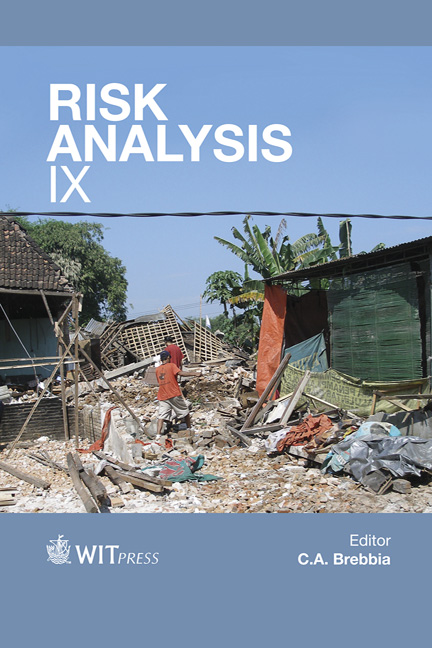A Disaster Severity Assessment Decision Support Tool For Reducing The Risk Of Failure In Response Operations
Price
Free (open access)
Volume
47
Pages
12
Page Range
369 - 380
Published
2014
Size
585 kb
Paper DOI
10.2495/RISK140311
Copyright
WIT Press
Author(s)
S. Hasani, R. El-Haddadeh & E. Aktas
Abstract
After a disaster strikes, the disaster severity needs to be estimated in order to provide an adequate humanitarian response. The decision makers need to decide quickly about the requisite supplies and bespoke teams based on the scale and nature of the disruption. The failure of the severity assessment may impose risk to the success of the response operations, leading to the loss of lives at worst. The existing severity assessment tools employ various criteria such as intensity, frequency, vulnerability and capability. However a framework which differentiates between the impact of disasters on communities with different coping capabilities, is missing. For example, an equally intense earthquake affects Japan differently from Haiti, due to the difference in the coping capabilities of the two nations. To that end this paper investigates the records of previous disasters to provide a holistic Disaster Severity Assessment (DSA) tool. This decision support tool accommodates physical and socio-economic impacts of the disaster on the affected population. The assessment is based on six criteria including impact time, fatality, casualty, relative financial damage, Human Development Index (HDI) and Disaster Risk Index (DRI). The resulting decision support tool may be used to diagnose the severity of the disaster immediately after it strikes. It also is capable of accommodating the imprecise data by the means of a fuzzy classification system. This characteristic allows the decision maker to draw a realistic picture of the disaster response required based on the affected population capabilities and reduce the risk of failure in disaster response operations. Keywords: disaster response operations, severity assessment, disaster risk management, risk reduction, decision support, fuzzy classification.
Keywords
disaster response operations, severity assessment, disaster risk management, risk reduction, decision support, fuzzy classification.





